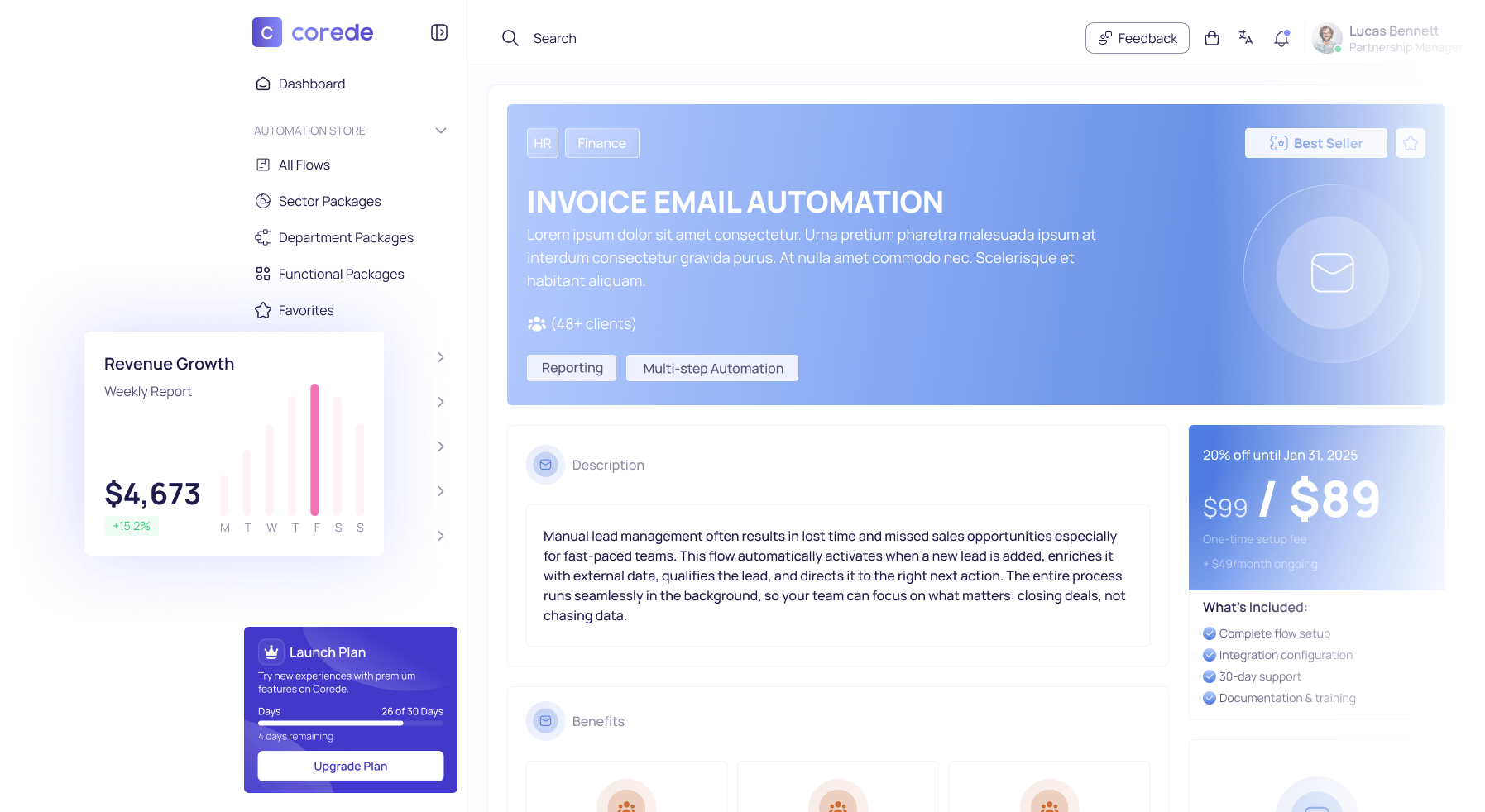
We Replaced 14 Manual Workflows With One Automated Flow
COREDE Editorial Team
17 August 2025
4 min read
At first glance, the team's operations looked normal. Everything was "under control" until it wasn’t.
A European B2B company handling procurement, supplier onboarding, and contract approvals had built its internal workflow organically. Over time, different teams added their own manual steps, and what once worked smoothly turned into a maze of emails, spreadsheets, and slack messages.
By Q1 of last year, it took an average of 4.3 days to process each supplier request. Most of that time was wasted on internal ping-ponging and rechecking files.
The leadership team knew something had to change.
Mapping the Chaos
When they finally mapped out their full internal workflow, the result was shocking:
• 14 manual steps
• 9 different tools used
• 6 handoffs between departments
• 3 approval stages with no version control
• Zero transparency for who owns which step
And worst of all? Every delay increased customer dissatisfaction and team frustration.
Automating With COREDE
COREDE Flow Engine allowed them to automate the full journey using one centralized workflow.
Here is how they rebuilt the process:
• Triggered automatically when a supplier fills out the initial form
• COREDE checks for missing data, flags anomalies
• Approval flow is routed to the right people with deadlines
• Each step is logged, tracked, and instantly visible to the team
• Final files are automatically archived and shared with stakeholders
The entire process that previously took 4.3 days was now done in under 40 minutes.
Business Impact
• 87 percent reduction in internal email traffic
• Saved 53 hours monthly across operations and admin staff
• Error rate dropped from 18 percent to under 2 percent
• Improved partner satisfaction scores by 2.6 points
Automation did not just improve speed, it rebuilt trust across departments. Teams no longer argue about missed emails. Everyone works from the same page, literally.
And it all started by asking a simple question:
Why are we still doing this manually?
Tags:

